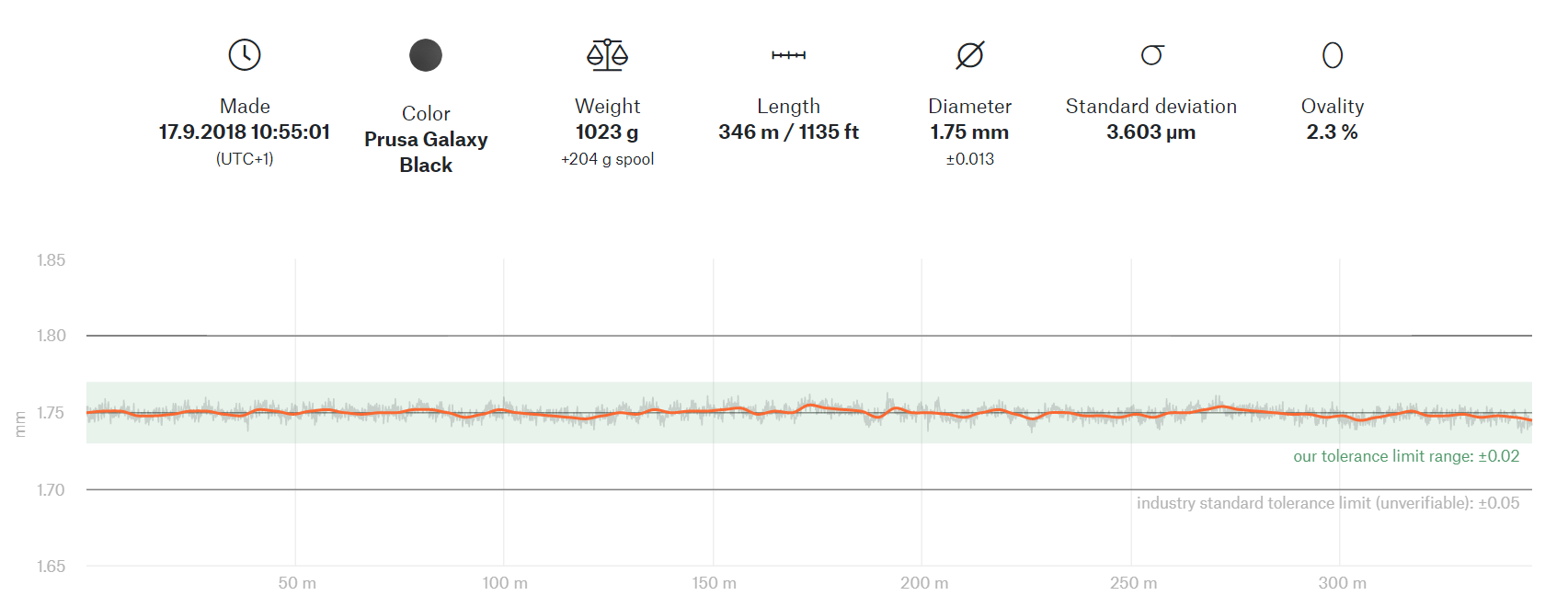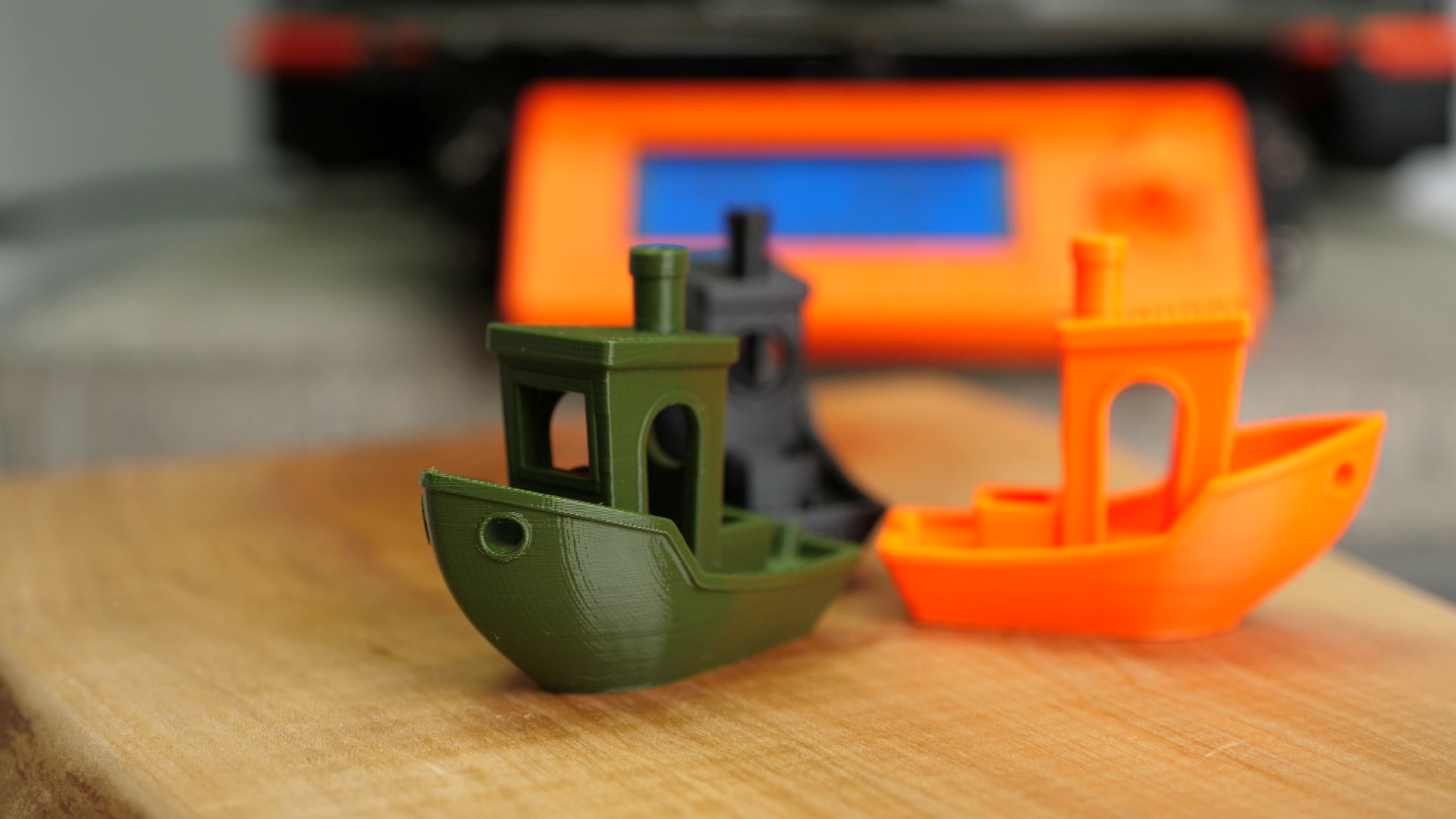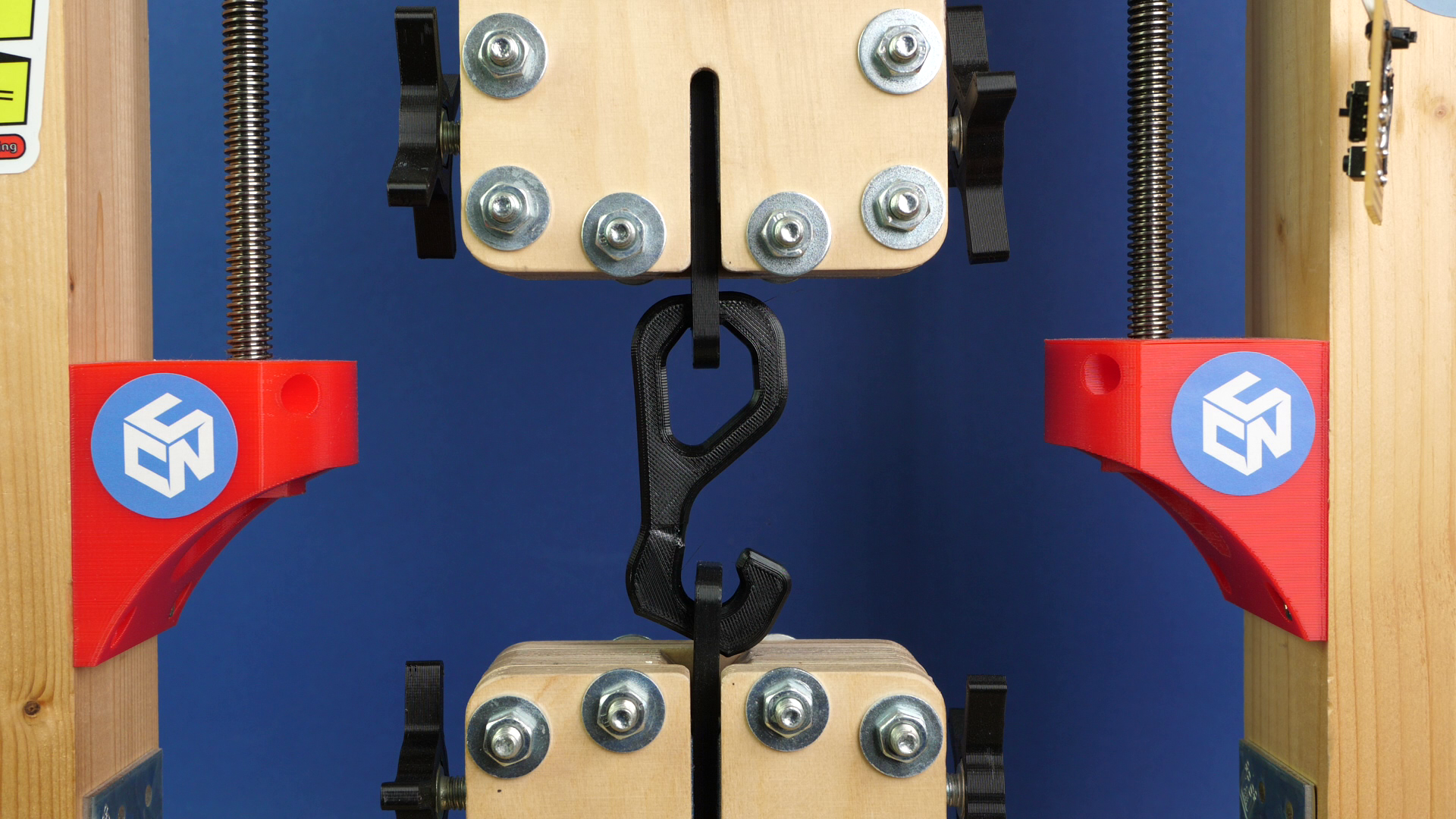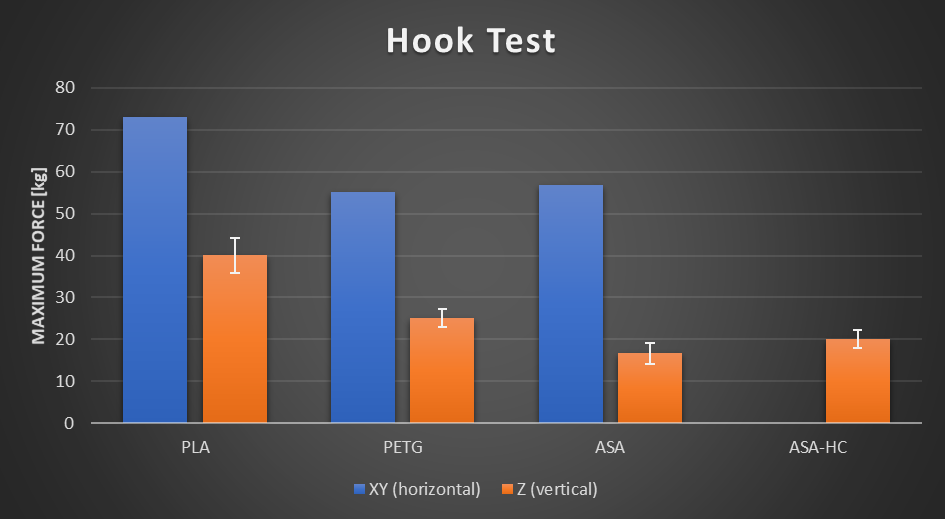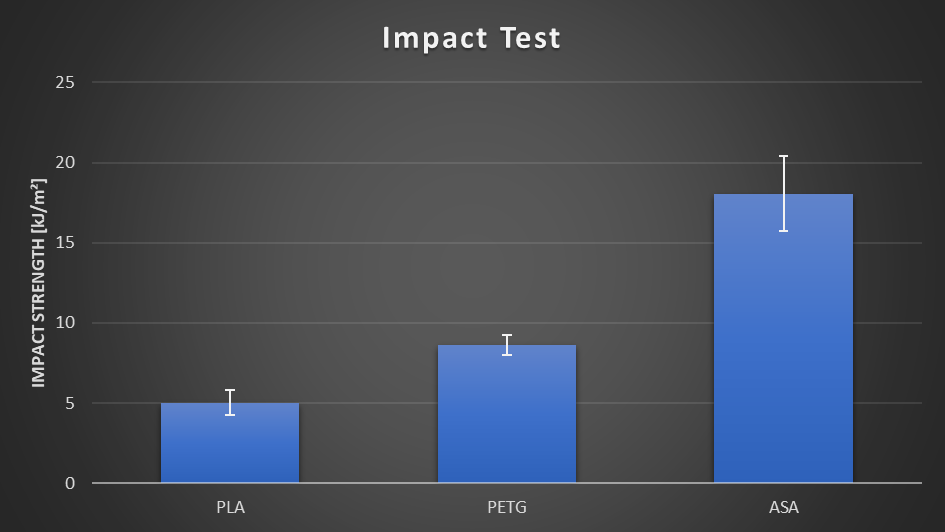Comparing PLA, PETG & ASA - feat. PRUSAMENT
Even though you can nowadays get almost any thermoplastic as a 3D printing filament PLA, PETG and ABS are still the most common ones used. PLA is the most printed material due to being very easy to print without any significant smell but with the downside of being a bit brittle and thermally not very resistant. ABS is slowly replaced by a very similar material which is ASA, that performs almost the same, but with the added benefit of being UV resistant, having less warping tendency and lower odor. PETG has been on the uprise since a couple of years and is praised for having the ease of printing of PLA but being less brittle and thermally more resistant. But how do those materials really perform in a side by side comparison and is there “a” best material.
I gotta say at this point that almost every material from every manufacturer will behave differently because even though it says PLA, PETG or ASA on the box, there isn’t just one PLA, one PETG or one ASA. Depending on manufacturer, the raw material, compositions and additives deviate and that will influence printability as well as performance and this is also why there are $10 PLAs as well as $50 PLAs on the market. Also the printer, print setting and environment changes properties. I can’t cover everything but I chose Prusas own material lineup for a reason, because once, they cover all of those materials, are all really decently priced and due to the amount of QA they perform shouldn’t scatter that much from batch to batch or even roll to roll! They even check material color to avoid having different hues when doing a project where you need more than one roll. Since Prusa also provides their whole own ecosystem with their Original Prusa Printers, PrusaSlicer and the Prusament it doesn’t require me to tune in each material on my own because they already did a pretty great job in that regard. And just to be clear, this material works just as well on any other printer that uses 1.75mm filament!
So what I’ve done is, that I printed quality parts and real test samples for all 3 types of Prusament and we’ll be taking a look at them side by side to see how they perform in each of these categories: Price, Printability, Printing Quality, Static Strength and Layer adhesion, Ductility, Stiffness, Impact Resistance and Thermal Resistance.
All spools come in a nice cardboard box and are sealed in thick plastic bags that are resealable for storage and include some desiccant. The spool itself looks unique with the hexagon cutouts that don’t only reduce material usage for less weight and shipping costs but also give you plenty of holes to poke the ends of your filament through. It features manufacturing date and print settings, as well as a QR code that lets you track each single spool produced and provides QC information. The only issue I had was with these slots in the center hole that are probably used for indexing during prodcution, but which caught on a cheap spool holder that I use on top of my printing enclosure and that resulted in printing artefacts. Definitely use a round one here. Prusa talked quite a bit about their perfect winding and it does really look nice and should reduce tangles during printing.
Example PRUSAMENT stats
A kilo of Prusament PLA sells for €25, PETG and ASA sell for €30 though the ASA spool only contains 850g. The reason for that is probably not because they are greedy but ASA has a density 15% lower than the other so 1kg of material just wouldn’t fit on a spool but since all spools still contain around 330m of filament you can still print the same amount. In the end that makes a kilo price of €25 for PLA, €30 for PETG and €35 for ASA. Taking the density into consideration, PETG and ASA both end up at 9 cents a meter, whereas PLA is 7.5 cents a meter. In Europe you can directly buy it from Prusas webstore, in the US it’s available on Amazon including free Prime shipping. So in the end it’s not super cheap but still a very decent price especially for the quality and range of colors you’re getting. And especially inexpensive if you compare it to materials from other 3D printer eco-systems.
All the prints were done on my Original Prusa i3 Mk3s. I printed two print jobs with each of the materials. One featured quality test parts, the other one contained the samples for material testing. I used stock settings on a stock printer, and didn’t play around with any parameters. All prints were done in my office and no enclosure, I only did one set of layer adhesion samples with ASA in an enclosure, down in my basement, but since it was wintertime it didn’t get much warmer than 30°C. PLA was printed at 215°C on the nozzle, PETG at 250°C and ASA at 260°C. Because this might also impact layer adhesion and print quality later, PLA used a fan of 100%, for PETG it was set to 30-50% and even ASA was printed with 20% part cooling fan. Parts mostly stuck quite well to the PEI coated spring steel bed but I sometimes applied a bit of Magigoo for challenging prints, even though Prusa doesn’t recommend the use of these adhesion products.
Overhangs looked great up to 55° and started to degrade at 65°, only, and remarkably, ASA printed those still great. Stringing and small details was also very similar with only the PETG getting a little worse right at the tips. PLA performed best at the bridging test, PETG a little worse and this was the only time that ASA came last. All 3DBenchies looked really good. The Army-green PLA and the Jet Black PETG had a shiny finish, the Orange ASA, which color I actually adore, was matte. The only thing I was able to see, was that the PETG was a little stringy which is common for that material and the ASA part had a small step on the height of the floor of the 3D Benchy which is a good indication that it contracts more during cooling than the others. Due to the usage of cooling, even the chimney on the ASA part looked great which is often a challenge with that material group. All in all that means, if you have a good material to start with and tune it properly PLA, PETG and ASA can all produce gorgeous prints.
3DBenchys printed in PRUSAMENT PLA (green), ASA (orange) and PETG (black)
Next, let’s continue with the interesting part and this is the mechanical tests. Since this shouldn’t get crazy technical, I compared the static strength of the materials not with standardized dog bone test samples but printed a couple of my test hooks where we can analyze the material strength of a lying part and the layer adhesion with the hooks printed vertically. All parts were printed with the same wall and infill settings. I mounted the parts one after the other in my DIY universal test machine and loaded them at a constant speed to remove the human factor. Let’s start with the horizontal hooks. The PLA part failed quite brutally at 73kg of load. There was some yielding, but when it went, it was quite suddenly. Next came the ASA part with 57kg of maximum force. It failed rather similarly with also a bit of yielding but then cracked instantaneously. The PETG part was the weakest with 55kg of failure load. In contrast to the others, and this is quite an advantage of PETG, it never snapped through and just stretched and stretched which make parts out of this material more robust.
PETG hook in test machine
In order to find out how good the layers bond together I’ve tested the same hook with similar wall thickness and infill only printed standing. As expected, the vertical parts failed earlier than the horizontal ones. The average failure load of the PLA hooks was 40kg, which is 55% of the ones printed lying. Quite a knock down but totally in the expected range. Next came the PETG hooks that failed on average at 25kg of load which is 46% of the horizontal ones. Again, still in the expected range but you can already see how much stronger PLA parts can be. Next came the ASA parts that snapped on average at 17kg which is only 29% of the reference load. ASA similar to ABS wants to be printed at best in a heated chamber without cooling, otherwise layer adhesion can suffer. So there is a trade-off between nice looking parts and well performing parts. I, at least tried what difference it makes if the material is printed in an enclosure. Due to the outside temperatures I didn’t get it to warm up more that to around 30°C, so still not ideal and might be a good idea for another investigation. Still, those hooks were able to bear 20kg of load which is 20% more than the parts without the chamber, so definitely think about elevated chamber temperatures when printing ASA or similar.
Hook test results
Next, let’s take a look at the stiffness of the materials, because this might sometimes be a factor you’re looking for. Also don’t mix up strength and stiffness of the material. Strength tells you how much stress a material can take before failing, stiffness is the resistance against a deformation. The force plots of our hooks already give us an indication which material is stiffer due to the initial slope of the curve. A stiff material has a steeper slope because at the same level of deformation it resists with more reaction force. PLA seems to be the stiffest, ASA is in the middle and PETG is the least stiff. In order to get a numeric value of the stiffness I performed a 3-point bending test with all materials where I loaded a fully dense bar with increasing weights and recorded the deformation. Using the dimensions of the bar, the recorded deformation and the applied weight I can now calculate the bending modulus of the material. As expected, PLA is really the stiffest with a bending modulus of 3300MPa, next comes ASA with 2300MPa and with only 70% of the stiffness of PLA, PETG is the most flexible material of the 3 with only 1900MPa, really interesting!
Stiffness Test results
With the hook test we’ve tested the strength of the materials when they are slowly loaded, though in some cases it might be interesting for you how the parts behave at an impact, for example if you crash your quadcoper. In order to test this, I performed an impact test with notched IZOD specimens. In this apparatus the coupons are placed in a vice and then struck by a hammer. This impact will use some of the kinetic energy of the hammer so it won’t be able anymore to swing back to the same height as it started. This can be measured with the attached scale. PLA absorbed on average 8% of the hammers energy which results in an impact strength of 5kJ/m². PETG was only a little better and absorbed on average 14% of the kinetic energy resulting in an impact strength of 8.6kJ/m². This is interesting and might be counterintuitive for some, because it behaved so ductile in the static hook test. This just shows the strain rate dependent behavior of the material, so the different behavior of properties at different loading speeds. ASA was the toughest material and was able to absorb almost 30% of the hammers energy resulting in an impact strength of 18kJ/m². This is more than 3 times the value of PLA and more than 2 times the one of PETG.
Impact Strength
In the last test I compared the temperature behavior of the 3 Prusament materials. I placed them in a small jig, loaded them in the center with a nut and placed everything in my convection oven that was fitted with an additional thermocouple. I tried to rise the temperature as uniformly as possible to capture the moment when the material starts to soften and when it finally fails. PLA started to give at first when I reached a temperature of 60°C and just 5°C later it completely failed. At 80°C I started noticing the PETG part slowly started to give and then also totally failed 5°C later. ASA was the most resistant and only started to soften at 110°C and slowly kept sagging until it wasn’t able to handle the weight anymore at 120°C.
Melted samples in fixture
So in summary, all of the Prusament filaments printed really nicely, even ASA without any enclosure. Static strength was the highest for PLA but it behaved way more brittle than PETG for example. Layer adhesion was around 50% below the reference strength for PLA and PETG only ASA was quite a bit weaker in that regard, though printing with an enclosure or maybe less fan might help. In terms of stiffness, PLA again showed the highest values, ASA came second and PETG only had 70% of the stiffness of the winner. Impact resistance was the lowest for PLA, next came PETG and ASA was by far the most tough material. Under elevated temperatures, PLA failed at first, PETG seems to be usable up to almost 80°C and ASA should be able to even bear boiling temperatures. Keep in mind that this comparison was made with the Prusament lineup. Other brands might perform differently.
In the end, there is no best material. Every one of them has its pros and cons! PLA is still my go-to material due to the ease of printing, the high strength and stiffness. If you want to avoid the printing odor and still a bit more hassle during printing but need the ductility and more toughness, PETG is a nice alternative to PLA. ASA especially shines at higher temperatures and demanding applications but at least without a special setup suffers in terms of layer adhesion. Still, due to the odor I avoid the material if I can. So as an example, what material of those 3 might now be suitable for a quadcoper frame? In such a case I might still use PLA due to it’s strength and stiffness. I wouldn’t choose PETG because first it’s density to strength and stiffness ratio is not great and during an impact it’s not that much better than PLA. ASA might be a good option there, because it has a lower density and, in the end, only a slightly lower weight to strength and stiffness ratio than PLA but is more impact resistant and thermally stable. Still PETG is a good option if weight is not an issue but you need a bit more toughness and thermal stability. But in the end, you have to choose and I’d really like to know which materials you prefer for your projects and why! Leave a comment down below!
Related links
PRUSAMENT PLA on AMAZON (US only) (aff): https://geni.us/5o6x
PRUSAMENT PETG on AMAZON (US only) (aff): https://geni.us/Z5eIFd
PRUSAMENT in the Prusa Store: https://geni.us/Mgqe

